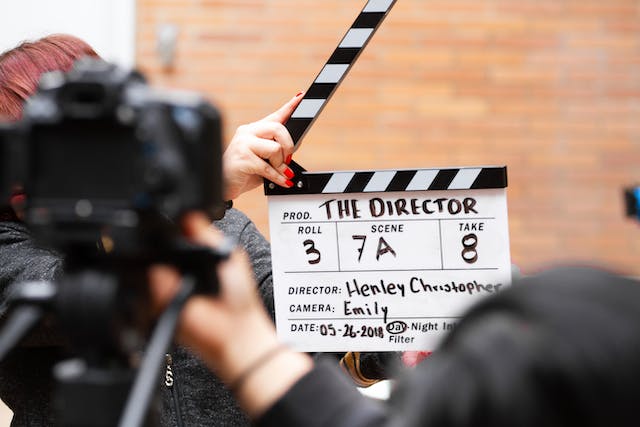Remakes aren’t always held in high regard because they are usually dismissed as inferior copies of the original. It’s almost inevitable that whenever a remake movie hits the movie theaters, that’s where audiences cannot help but compare it to the original — and usually, they conclude that the “first movie is better.”
Remakes are sometimes criticized as an easy way for the producers to make money by exploiting the success (or notoriety) of the original movie. This might be especially true in the case of big-budget Hollywood films.
They may be generally panned by the moviegoers for their lack of fresh material and hackneyed dialogue… But lo and behold, not all remakes are like that. There are a handful of remakes that are as good as the original… or maybe even better. You’d be surprised to discover that some of your beloved classic films are actually remakes. Here are some of them:
1. Ocean’s Eleven (2001)
A 2001 remake of the original 1960 version, it was directed by Steven Soderbergh and starred an ensemble cast featuring George Clooney, Brad Pitt, Matt Damon, Don Cheadle, Andy Garcia and Julia Roberts.
Like the remake, the original Ocean’s Eleven also had a stellar cast, featuring no less than the legendary “Rat Pack” — Frank Sinatra, Dean Martin, Sammy Davis Jr., Peter Lawford and Joey Bishop. While both the original and the remake boasted a high-profile cast, critics panned the original for being a boring heist movie. Frank Sinatra’s particulalry bad performance, a muddy script and forgettable characters prevented the film from becoming a potential classic.
You won’t see any of these in Soderbegh’s remake. The film is brimming with energy and is praised for its witty script and memorable characters delivered by some of the best actors at the time.
2. The Maltese Falcon (1941)
The Maltese Falcon, which starred the legendary Humphrey Bogart and was directed by John Houston, was the 1941 remake of the 1931 original celluloid. Both films were based on Dashiell Hammett’s 1929 detective novel of the same name.
Comparing the 1931 and the 1941 versions is a bit tough. You see, the original 1931 version actually follows to the Hammett novel more faithfully than the Bogart starrer. The original film was released during the pre-censorship era in Hollywood, which means the movie even followed the book’s strong homosexual connotations.
The 1941 remake, on the other hand, was released during the time where censorship had been enforced. As a result, the homosexual hints had been considerably “glossed over” in the remake in order to avoid problems with the censors.
Content-wise, the 1931 original movie may have a lot more substance than the remake. But it was Bogie, who starred as the private investigator Sam Spade, who almost single-handedly carried The Maltese Falcon remake that it went on to become an enduring Hollywood film classic.
3. The Fly (1986)
You’d be surprised to find out that director David Cronenberg’s 1986 “science-has-gone-awry” sci-fi/horror movie is actually the remake of the 1958 original film. Both are cinematic adaptations of George Langelaan’s 1957 short story of the same title, about a scientist who turns into a house fly after a gross experimental mistake.
The remake is definitely better than the original not just because of the obvious. Aside from the realistic special effects, it is also the story that has made the remake of The Fly soaring above its predecessor. The movie launched director Cronenberg into a highly-esteemed director and made its lead actor Jeff Goldblum a certified star. More importantly, The Fly remake has become one of the must-see films of the sci-fi/horror genre
4. Invasion of the Body Snatchers (1978)
Invasion of the Body Snatchers was directed by Philip Kaufman and the 1978 remake of the 1956 original film of the same title, which was directed by Don Siegel. Both films were based on Jack Finney’s 1955 sci-fi novel about an alien invasion where humans are gradually replaced by cloned duplicates, who are completely devoid of emotion.
While the 1956 version is undoubtedly one of staples of the sci-fi genre, it has become a bit more dated in the ensuing years. Besides, outside factors intervened during the film’s production, which led to the alterations of the story aimed to make the movie more palatable to the audience.
The 1978 remake, on the other hand, did not have a happy ending like the original had. Besides the obvious (the visual effects), what made the remake miles better (and definitely a lot scarier) than the original is its excellent script and memorable performances by Donald Sutherland, a young Jeff Goldblum (who starred in The Fly, which is mentioned here in this article) and Leonard Nimoy.
5. Little Shop of Horrors (1986)
Both the original and the remake film versions of Little Shop of Horrors are based on the off-Broadway musical of the same name by Alan Menken, about a hapless flower shop employee who raises blood-sucking plants.
The original celluloid adaptation was first released in 1960, and was directed and produced by Roger Colman, the undisputed king of B-movies. The remake version, on the other hand, was released in 1986 and was helmed by director Frank Oz. Fans of Jack Nicholson won’t surely miss his cameo in the original movie during his early acting career.
While both the original and the remake versions have both attained cult status, the 1986 is significantly much better because it had the budget for visual effects as well as for the promotion. But many movie fans have dismissed the remake’s happy ending as somewhat out-of-place with the film’s overall morbid atmosphere. In fact, director Oz himself didn’t like the change in the film’s ending, but thankfully Warner Brothers released the 2012 “Director’s Cut” edition which contains the original ending.
